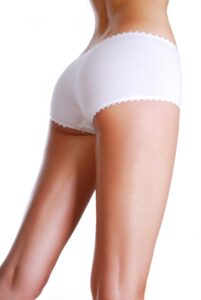 There are many joys and curses associated with being a woman. Not only do you get to experience the benefits of motherhood but you also get to experience the annoyance of bodily changes and issues such as cellulite. By causing your skin to look and feel dimpled on areas of your body such as your upper thighs as persistent subcutaneous fat causing accumulates, cellulite can affect women of all sizes and ages. Read on to learn more about cellulite.
There are many joys and curses associated with being a woman. Not only do you get to experience the benefits of motherhood but you also get to experience the annoyance of bodily changes and issues such as cellulite. By causing your skin to look and feel dimpled on areas of your body such as your upper thighs as persistent subcutaneous fat causing accumulates, cellulite can affect women of all sizes and ages. Read on to learn more about cellulite.
It’s Genetic
One of the biggest bummers when it comes to certain things like cellulite is the fact that genetics play a big role in whether or not you have it. For instance, if your mother got cellulite on her thighs when she was really young, even though she was thin, then you are more likely to experience the same thing. Blame it on your parents, but if they have cellulite, then you are more than likely going to get it too.
It Affects Lighter Skinned People
Now, there is no strong scientific evidence to back up the claim that lighter skinned people are more affected by cellulite, however, it could be argued that it is more visible on individuals with lighter complexions than it is on individuals with darker complexions. For instance, have you noticed that the more tanned your skin is, the thinner you tend to look? This is likely due to the fact that imperfections like cellulite and even veins aren’t as noticeable when your skin is tanned. So if you do have fair skin, consider applying a tanning lotion to your legs when you want to show them off.
It Doesn’t Discriminate
Probably the worst thing about cellulite is that it does not discriminate. No matter if you are overweight or thin, young or old, you could still have cellulite. Meaning that even the slimmest models in the world could still get cellulite. And even young teenagers can also start to notice the appearance of cellulite on their upper thighs or buttocks.
If you have cellulite and would like to get rid of it, Dr. Fiona Wright offers a few solutions to help treat it. Contact our office today to learn more!

